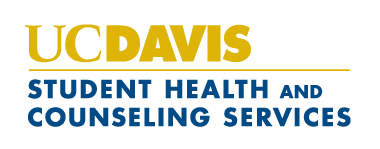The Student Wellness Liaison (SWL) program and the Aggie Mental Health Ambassador (AMHA) program will centralize services and staffing, and will be overseen by the Health Education and Promotion team in Student Health and Counseling Services. While the two programs will remain distinct, centralizing oversight of their operations will allow for deeper alignment and amplification of their overall impact. This transition is part of our ongoing commitment to enhance equity, increase student opportunities and improve efficiency.
The SWL program is currently managed by Health Education and Promotion, and the AMHA program is provided by Public Health Sciences and Student Affairs. The new unified approach allows us to be better stewards of resources while strengthening support for our community through increased collaboration and an equity-based approach.
Our goal is to ensure every student receives the support they need through a broad and strategic outreach approach, with a dedicated focus on uplifting underserved students who experience health disparities.
We’d like to acknowledge the critical and important work of Public Health Sciences and members of the Aggie Mental Health taskforce in supporting the Aggie Mental Health Campaign in reducing stigma and increasing awareness of mental health resources for students. We look forward to sustaining the work along with our partners in the Community Resource and Retention Centers, Academic Retention Initiatives and Student Affairs Marketing and Communications.
Will there still be students supporting mental health outreach?
Yes – campus partners will continue to have access to trained student employees supporting mental health outreach.
Are any students losing their jobs as a result of this transition?
No students are losing their jobs as a result of this transition. All non-graduating AMHAs and SWLs are encouraged to stay in their programs. The centralization is focused on expanding opportunities — adding and diversifying student positions while increasing hours to better serve campus mental health needs. The transition will be gradual, allowing for the growth of some program areas while thoughtfully realigning others.
What is the difference between the Student Wellness Liaisons and the Aggie Mental Health Ambassadors?
The main differences are between their focus and placement: Student Wellness Liaisons are embedded within various community and identity-based centers and serve as a bridge between those centers and SHCS/HEP, tailoring wellness initiatives to the specific needs of their communities. The Aggie Mental Health Ambassadors deliver campus-wide, highly visible, mental health outreach activities.
Who will oversee the program?
Oversight will shift from the current structure* to a more centralized model under SHCS’s Health Education and Promotion. A full-time, dedicated career staff person will provide robust support and ensure the long-term success of the program.
When will this transition take place?
We anticipate that conversations and planning will happen during Spring and Summer 2025, with the full program transition taking place in Fall 2025. However, there is flexibility in this timeline; we want to ensure that all stakeholders and partners are actively involved in the process to facilitate a smooth and collaborative transition.
How does merging these programs strengthen mental health support for students, rather than reduce it?
The centralized model does not take away student opportunities or services, rather, it expands and grows them. By combining the programs, we ensure that UC Davis students will have access to well-trained, well-supported peer leaders who are prepared to guide their peers and raise awareness of mental health resources on campus. Examples include:
- Enhancing Equity: This unified approach sustains student outreach while integrating wellness resources into various student communities. By expanding the SWL program within community and identity-based centers, we are acknowledging that different communities have unique mental health needs—and we are directly investing in solutions tailored to them. Student leaders will receive training in campus services and peer mental health support, ensuring consistent and equitable access to high-quality mentorship, outreach and resources.
- Increasing Student Opportunities: Centralizing programs and expanding student positions enhances leadership opportunities in mental health outreach and health promotion. Students can choose roles aligned with their passions and interests, gain more work hours for hands-on experience, and access quarterly professional development, including career panels, campus resource presentations, career/strengths-based assessments and exposure to the mental health field.
- Improving Efficiency: By consolidating efforts under one umbrella, we ensure that funding, staff time and training efforts are used strategically and aligned with a shared vision, such as the Student Affairs Strategic Plan. The new model leverages full-time career staff already engaged in this work to provide mentorship and support long-term program development, while also connecting students with SHCS Community Advisory Network counselors, marketing and communication experts, and faculty/academics from the Department of Public Health Sciences. The centralization will ensure one cohesive, cross-collaborative, well-supported initiative.
* Currently, the Aggie Mental Health campaign, including the website and social media account, is overseen by HEP and Student Affairs Marketing and Communications. The Student Wellness Liaison program is overseen by HEP and our Community Resource and Retention Centers and Academic Retention Initiatives. The Aggie Mental Health Ambassadors are overseen by the department of Public Health Sciences.
